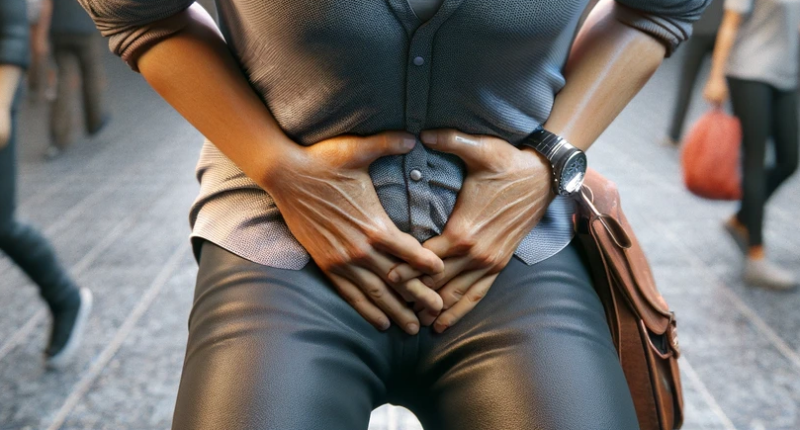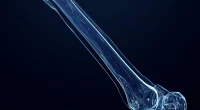Prostatitis
What is prostatitis?
Prostatitis is an acute or chronic inflammatory disease of the prostate gland. The acute form is characterized by distinctsymptoms. In the absence of adequate therapy, it turns into a chronic form. This variant of prostatitis is less amenable to treatment and can lead to malignant degeneration of gland tissue.
About the disease
Prostatitis is a widespread problem faced by about 40% of men over 40 years of age. It does not directly threaten a man’s life, but by reducing working ability, affecting the psychological state, and limiting freedom, prostatitis significantly worsens the quality of life.
Prostate inflammation can occur as an independent pathology or combined with adenoma or cancer of this organ.
Types
In 1996, a classification was developed, according to which four categories of prostatitis in men are distinguished:
- Acute prostatitis.
- Chronic prostatitis of a bacterial nature.
- Chronic inflammation of the prostate gland of a non-bacterial nature.
- IIIA. With signs of inflammation (leukocytes and any microorganisms found in the prostate secretion).
- IIIB. Chronic non-bacterial prostatitis without inflammatory component (no leukocytes and microorganisms in the prostate secretion).
- Chronic asymptomatic prostatitis (a man does not complain, but leukocytes are found in the prostate secretion).
Symptoms of prostatitis
Depending on the form of the disease, prostatitis can occur suddenly, manifesting vivid clinical symptoms, or proceed with alternating periods of exacerbation and remission.
Common signs of prostatitis in men:
- pain of varying intensity in the perineum, irradiating to the groin and sacrum;
- lower back pain;
- urinary disorders (pain at the beginning of the act and throughout its duration, intermittent flow of urine, possibly – drip urination, frequent urges);
- decreased potency and libido;
- painful ejaculation;
- pain after intercourse;
- erectile dysfunction;
- intoxication syndrome – weakness, fatigue, increased body temperature, headache, sometimes – nausea, vomiting.
Not necessarily all of these symptoms will be determined in the same man – different combinations of them are possible. In the exacerbation of chronic prostatitis, as a rule, they are less pronounced than in the acute form of the disease and in remission – almost undetectable. Sexual dysfunction occurs more often in men who have chronic prostatitis for more than five years.
If prostatitis is neglected, the risk of developing prostate adenoma and cancer, infertility, and impotence, which is challenging to treat, increases. Having detected the first symptoms of the disease, it is necessary to see a urologist as soon as possible. It will allow a comprehensive treatment to stop the pathological process.
Causes of prostatitis
There are infectious and non-infectious causes of prostatitis.
Acute infectious prostatitis is caused by bacteria, mainly Enterobacter, Escherichia coli, Pseudomonads, Proteus, sexually transmitted infections, and less commonly by Mycobacterium tuberculosis. The spectrum of microorganisms that can cause exacerbation of chronic prostatitis is much broader and can include both opportunistic and atypical (candida) infections.
The microorganism enters the prostate gland from the urethra and bladder less often – with the flow of blood or lymph from remote foci of infection.
Factors that increase the risk of developing the disease:
- STDs;
- chronic infectious diseases located remotely (dental caries, sinusitis, lung abscess);
- congenital and acquired immunodeficiencies;
- pelvic manipulations and surgeries;
- prostate biopsy;
- sedentary lifestyle, accompanied by stagnation of blood in the pelvic area;
The causes of non-infectious forms of prostatitis are not definitively studied. It is believed that it is associated with stagnation of secretion in the prostate gland due to impaired venous outflow from the pelvic organs. Prostate vessels overflow with blood and swelling, all gland functions are disturbed, and there are signs of inflammation. Risk factors for the development of this form of prostatitis are:
- autoimmune diseases (attack of prostate cells by the body’s antibodies);
- prolonged lack of sexual activity;
- prolonged or interrupted intercourse;
- sedentary lifestyle;
- unfavorable working conditions (exposure to vibration);
- chronic intoxication with certain chemicals;
- spinal cord injury;
- hemorrhoids;
- constipation;
- deficiency of androgen levels in the male body.
Diagnosis of prostatitis
Prostatitis is diagnosed based on patient complaints, examination data, anamnesis, and the results of additional tests. To detect the disease following tests are used:
- general and biochemical blood tests;
- prostatic secretion study;
- analysis of biological fluids for urogenital infections;
- transurethral ultrasound of the prostate (TRUSI;
- prostate-specific antigen test;
- testosterone levels;
- urinalysis.
Prostatitis treatment
When the diagnosis is established, a patient is prescribed a complex drug treatment. It includes antibacterial drugs, enzymes, phytotherapy, and immune modulators. If the patient complies with all the recommendations of the urologist, treatment of acute prostatitis in outpatient conditions leads to full recovery. Conversely, violation of therapy causes the emergence of highly resistant forms of microorganisms that traditional antibiotics cannot destroy. Consequently, inflammatory and dystrophic processes worsen, and the disease becomes chronic.
Chronic prostatitis is difficult to cure. It requires a comprehensive approach with the prescription of a long course of medication and special therapeutic procedures. Urologists make the patient an individual therapeutic plan, which includes:
- antibiotic therapy for up to a month;
- vasoprotective drugs;
- enzyme treatment;
- non-steroidal anti-inflammatory drugs that control the inflammatory response;
- immunomodulatory treatment (selected by an immunologist);
- prostate massage;
- urethra instillations, if the inflammatory process is localized in the urethra;
- physiotherapy treatment.
The patient can receive treatment in a hospital or on an outpatient basis. In the first case, the chances of a positive result increase, as the man precisely follows the regimen, adheres to all doctor’s prescriptions, and is under close medical supervision.
In case of complications of prostatitis (suppuration of seminal vesicles, abscess of the prostate gland), a man may be shown surgical treatment.
Physiotherapeutic treatment
Many clinics have unique modern devices for localized treatment of the prostate. Physical procedures increase the effectiveness of complex treatment, reduce the resistance of microorganisms to antibiotics, and eliminate congestion in the organ. For the treatment of prostatitis, doctors use:
- A device for complex exposure on the prostate and pelvic muscles. The therapeutic effect is due to electrostimulation, laser, and magnetic radiation. Contributes to improving drainage of the gland, activation of blood circulation in the pelvis, elimination of inflammation, and better penetration of drugs into the organ’s tissues.
- Vacuum massage device restores blood supply of the penile cavernous bodies and improve blood circulation in the pelvic organs. It is used for the treatment of prostatitis associated with apparent erectile dysfunction, as well as in the complex treatment of impotence. Eliminates the causes of congestion, as it increases the tone of blood vessels.
- A device for local heating of the prostate. Heating tissues up to 39-42 ° C inhibits microorganisms’ reproduction, starts prostate metabolic processes, and improves blood supply. It is used to treat various forms of prostatitis.
All these treatment options are available in more than 830 hospitals worldwide (https://doctor.global/results/diseases/prostatitis). For example, Transurethral resection of the prostate (TURP) can be performed in 18 clinics across Turkey for an approximate price of $4.2 K (https://doctor.global/results/asia/turkey/all-cities/all-specializations/procedures/transurethral-resection-of-the-prostate-turp).
Prevention
Specific prevention of prostatitis in men has not been developed. Non-specific measures include patient compliance with several recommendations:
- drink plenty of fluids;
- do not tolerate having to go to the toilet; empty your bladder regularly;
- to be sexually active;
- avoid hypothermia;
- avoid hypodynamia;
- to observe the rules of intimate hygiene;
- treat urogenital infections and any other infectious diseases of the body promptly;
- reduce the amount of spicy foods, caffeine, and alcoholic beverages in the diet, as they irritate the urinary tract.
Rehabilitation
In a short time to recover from acute or exacerbation of chronic prostatitis, a man will have an active lifestyle, compliance with the attending physician’s recommendations regarding supportive therapy, and proper nutrition.
To avoid stagnation of blood in the pelvic organs, a person should move more, and if his work involves hydrodynamic (for example, an extended stay behind the wheel) – whenever possible, get out of the car and move, visit the gym.
Properly organized nutrition will speed up recovery and reduce the risk of disease exacerbation. Eating plenty of plant foods – vegetables, oils, fermented milk products, and fiber- is essential.


